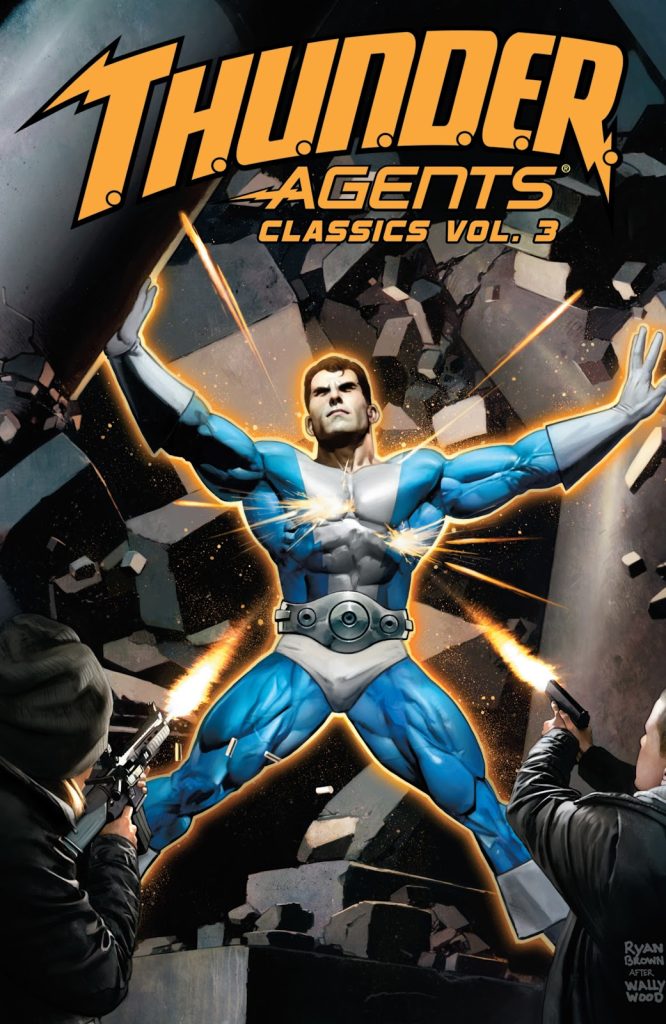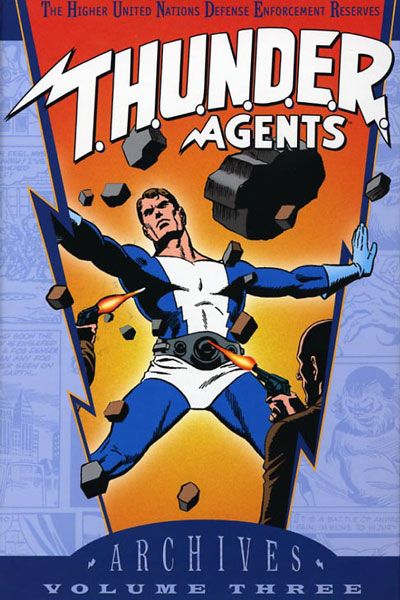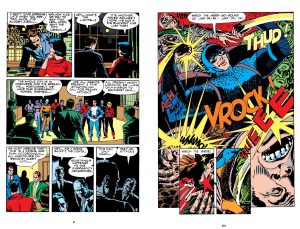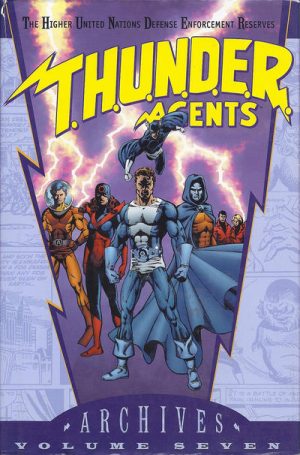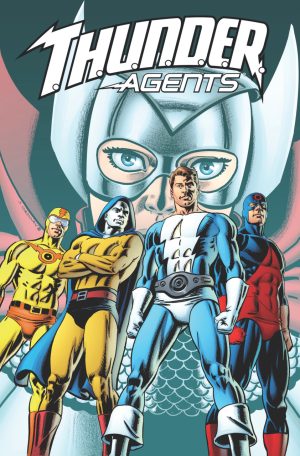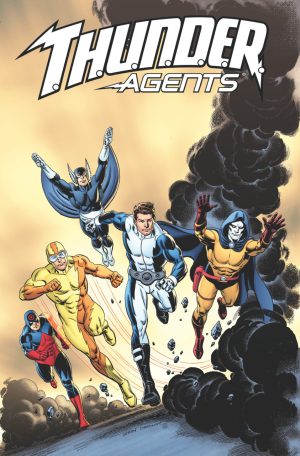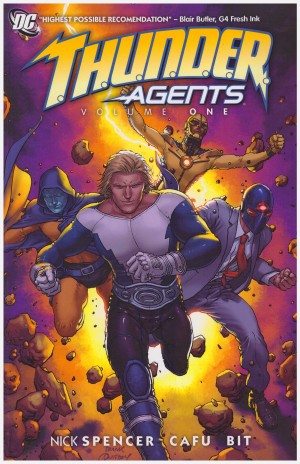Review by Ian Keogh
If it needs underlining what a great comic artist Wally Wood is, his sample page here is the only evidence required. It’s a masterful piece of scene-setting featuring a variety of people and viewpoints, amazingly well staged panels and great highlighting. Wood continues to startle throughout a story that’s the beginning of the end for the long-running conflict between the T.H.U.N.D.E.R. Agents and the Warlords.
Continuing from Vol. 2, this runs through the several opening stories during which the secrets of the Warlords are revealed, and their threat is ended with several nice touches along the way. Bill Pearson writes the neat twist in the Noman story (and provides the introduction for the equivalent hardcover package T.H.U.N.D.E.R. Agents Archives Volume Three), and there’s some wit about Ralph Reese’s scripts, but sadly so few of the writers can be identified, not being credited in 1966. At this point, though, Wood was still writing much of the content. It’s still a thrilling package, if not greatly artistically stimulating when anyone other than Wood is drawing, with the exception of Manny Stallman, noted below. John Giunta, a waning Mike Sekowsky and George Tuska are no comparison.
Dealing with the Warlords required the entire team, and from now on that’s more frequent than it has been, along with single agents guest starring in the stories of others. A few stray Warlords cause trouble, but with the main organisation out of the picture, a new threat emerges. S.P.I.D.E.R. are the Secret People’s International Directorate for Extra Revenue, inspiration patently low on the day the writer came up with that. More Communists are also conscripted as villains, resulting in racist caricatures from Tuska, but the stories still depend on personalities. Dynamo is undoubtedly heroic, but it’s reinforced he’s not the sharpest tool in the box, and he lives in fear of yet another dressing down.
Andor, the misunderstood anti-hero seen in Vol. 1, runs up against Lightning and Noman, while the flying Raven is a new character, his adventures eccentrically drawn by Stallman (sample right) whose influences include Milt Caniff and Alex Toth. The storytelling is all over the place, but his art is like nothing else seen in comics, stylish and energetic, and well overdue for reappraisal. Also new is Ogden Whitney, better at telling the story, but stiff and uninspired. Elsewhere the greater contribution of Dan Adkins is evident, looking like Wood’s pages, but on closer inspection nowhere near as solid.
Less art from Wood and more standard writing leaves this collection occasionally sparking into life, but not as often as the earlier volumes. Will Vol. 4 raise the quality again?
